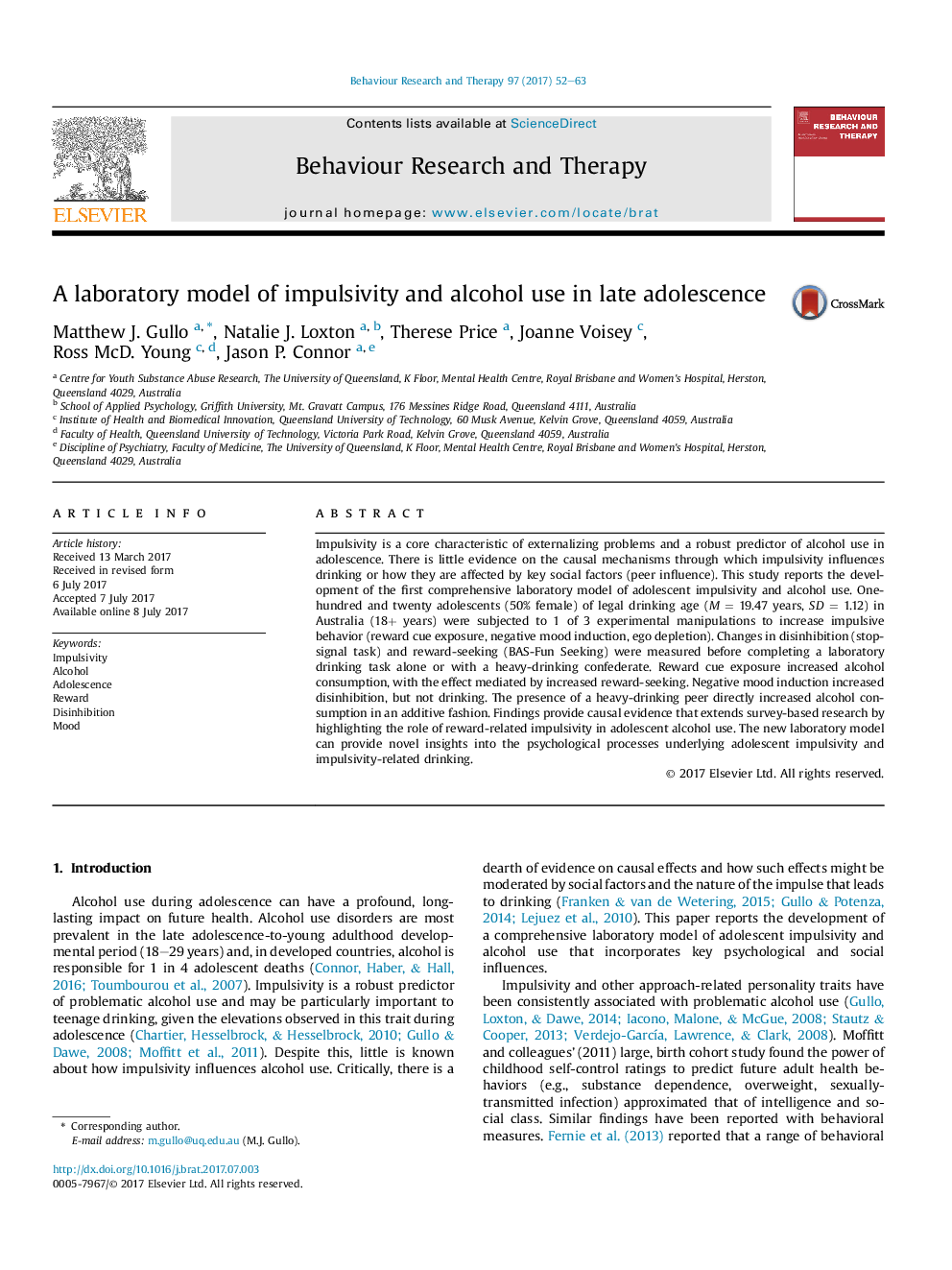| Article ID | Journal | Published Year | Pages | File Type |
|---|---|---|---|---|
| 5038157 | Behaviour Research and Therapy | 2017 | 12 Pages |
â¢Impulsivity is robust predictor of adolescent alcohol use, but causal evidence lacking.â¢Developed first laboratory model of adolescent impulsivity and alcohol use.â¢Reward exposure increased reward-seeking and adolescent alcohol use.â¢Negative mood increased disinhibition, but not alcohol use.â¢Impulsivity effects independent of sizeable peer influence on drinking.
Impulsivity is a core characteristic of externalizing problems and a robust predictor of alcohol use in adolescence. There is little evidence on the causal mechanisms through which impulsivity influences drinking or how they are affected by key social factors (peer influence). This study reports the development of the first comprehensive laboratory model of adolescent impulsivity and alcohol use. One-hundred and twenty adolescents (50% female) of legal drinking age (MÂ =Â 19.47 years, SDÂ =Â 1.12) in Australia (18+Â years) were subjected to 1 of 3 experimental manipulations to increase impulsive behavior (reward cue exposure, negative mood induction, ego depletion). Changes in disinhibition (stop-signal task) and reward-seeking (BAS-Fun Seeking) were measured before completing a laboratory drinking task alone or with a heavy-drinking confederate. Reward cue exposure increased alcohol consumption, with the effect mediated by increased reward-seeking. Negative mood induction increased disinhibition, but not drinking. The presence of a heavy-drinking peer directly increased alcohol consumption in an additive fashion. Findings provide causal evidence that extends survey-based research by highlighting the role of reward-related impulsivity in adolescent alcohol use. The new laboratory model can provide novel insights into the psychological processes underlying adolescent impulsivity and impulsivity-related drinking.
